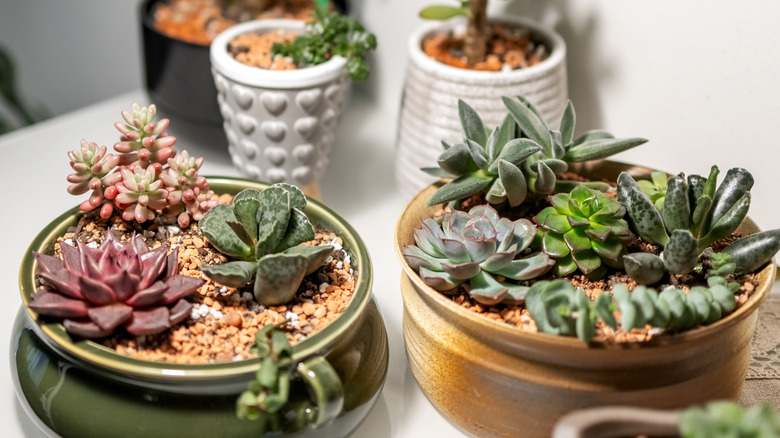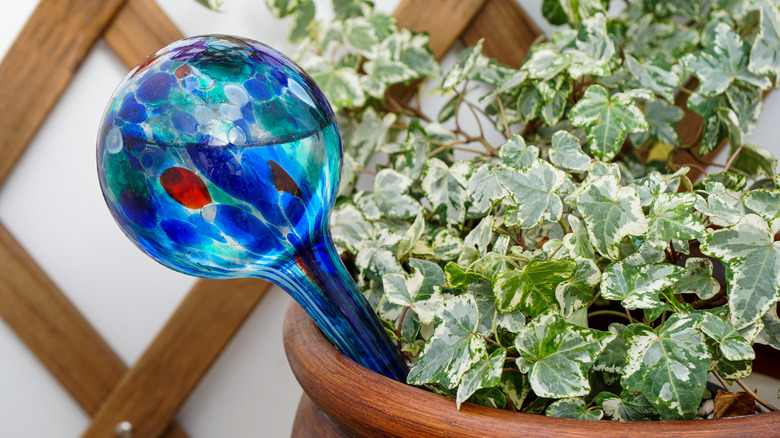The Popular Watering Hack You Should Never Use On Succulents
Maintaining the proper watering schedule for plants can be challenging, especially when your houseplants have different needs. Consistency is key, but busy work days and summer vacations can make it even harder to stay on track, leaving your plants stressed and vulnerable to diseases and pests. To fix the problem, many houseplant owners turn to popular watering hacks like moisture globes or stakes. But when it comes to caring for fast-growing succulent plants, this trick can spell the end for low-humidity plants by introducing excess moisture and causing root rot.
Whether it's a jade plant (Crassula ovata), the shade-tolerant ZZ plant (Zamioculcas zamiifolia), a ponytail palm (Beaucarnea recurvata), or anything in the Echeveria or Haworthia families, succulents won't tolerate wet feet for long. Many species are native to arid regions, such as Northern Mexico and Southwest Asia, preferring loose, porous soil that drains easily. To survive, these plants store water in their leaves, creating their characteristic plumpness. Since there's ample time between rains for the roots to dry, rot isn't often an issue in their natural, arid climates.
As houseplants, however, succulents can easily fall victim to overwatering, and the addition of a moisture globe may hasten this process. Despite checking for common signs that you are overwatering your indoor plants and causing damage, you may not be able to stop the problem in time. Instead, help your succulents thrive by replicating the plant's natural wet-dry cycle. But if your succulent is damaged by a moisture globe, these tips may help you revive it.
How moisture globes damage succulents (and how to revive them)
Moisture globes, typically round glass or plastic reservoirs with long downspouts, can be a colorful and helpful addition to your indoor garden. Once filled with water and staked into the soil, these self-watering aids offer constant moisture support by gradually saturating the soil around the root ball. Dense soils may act as a vacuum seal, allowing the water to release slowly as the soil dries. But a loose, succulent-friendly soil may be unable to stop the flow of water, which can lead to pooling at the base of the pot. Even if the water releases gradually, it can keep the soil consistently wet instead of letting it dry out like succulents need.
With nowhere to go, this extra moisture creates a damp and inhospitable environment for your succulent. Starved of oxygen, your waterlogged plant may begin to develop a fungal infection or show signs of rot. And if left for too long, your plant may not survive. Luckily, there are a few ways you can attempt to revive a struggling succulent that was damaged by a moisture globe.
After removing the moisture globe and any excess water, allow your succulent to dry out completely before giving it another drink. If your plant is already showing signs of root rot, repot your succulent in a dry environment with good drainage to give it the best chance of survival. You can also try Martha Stewart's tips for propagating succulents to start fresh with a whole new plant — just remember to skip the moisture globe this time!

